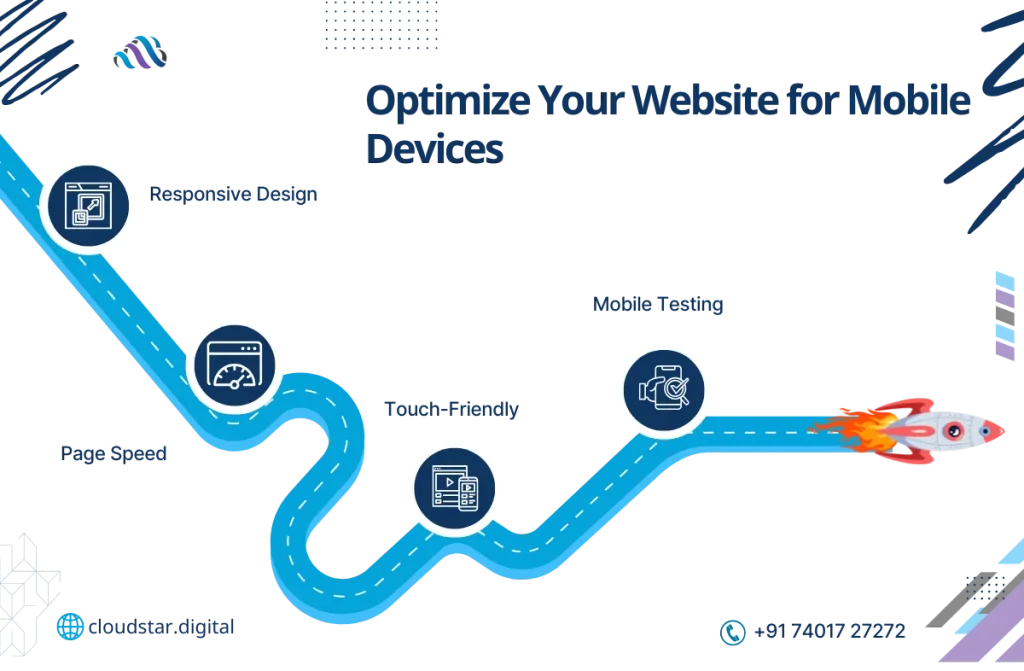How to improve SEO on Google is a question many website owners and digital marketers often ask. Ranking higher on Google can make a big difference in the visibility and success of your site. Whether you’re a beginner or a seasoned marketer, there are always steps you can take to optimize your SEO and help your site reach the top.
In this guide, we’ll go over simple, actionable tips to increase Google search ranking and understand how to rank number 1 on Google. By the end, you’ll have a roadmap to follow that can improve your website’s visibility and attract more visitors. Let’s dive in!
Mastering On-Page SEO: Keywords, Titles, and Meta Descriptions
On-page SEO is essential when learning how to improve SEO on Google. It involves optimizing the content on each page of your website so Google understands what it’s about.
Use Relevant Keywords
Keywords are the terms that people type into Google to find information. Adding relevant keywords to your pages helps Google know what your content covers. Try using a mix of main keywords, like how to increase Google search ranking, and related terms that match what your audience searches for.
Write Compelling Titles and Meta Descriptions
Titles and meta descriptions are the first things people see on Google’s search results page. A well-written title grabs attention, while a clear meta description explains what your page is about. This combination can boost clicks to your site.
- Title Tips: Include your main keyword, keep it under 60 characters, and make it engaging.
- Meta Description Tips: Use your main keyword, keep it under 160 characters, and summarize the page content.
Add Internal and External Links
Linking to other pages on your website (internal links) helps users explore your content. Linking to other reputable sites (external links) shows Google that you’re using trustworthy information. Both are helpful when you’re learning how to improve your Google ranking.
Optimize Your Website for Mobile Devices
A key part of how to improve Google search is making sure your site looks good and works well on mobile devices. With more people using their phones to browse, Google prioritizes mobile-friendly websites in its rankings.
Check for Mobile Responsiveness
Make sure your site automatically adjusts to fit different screen sizes. Google’s Mobile-Friendly Test tool can show you if your website is mobile-friendly.
Speed Up Your Site on Mobile
Mobile users expect fast loading times, so optimize images, reduce file sizes, and use efficient coding to ensure quick loading. A fast site can improve your ranking since Google prefers websites that load quickly on mobile devices.
By focusing on mobile optimization, you’ll not only improve user experience but also increase your chances of how to rank number 1 on Google for relevant searches.

What Is Website Traffic?
Website traffic refers to the visitors coming to your site. It’s not just about quantity—it’s also about quality. High website traffic ensures more exposure for your content, products, or services, while targeted traffic improves the chances of conversion.
Traffic sources are categorized into metrics that provide insights into how visitors navigate to your site, how long they stay, and whether they take desired actions (e.g., signing up, purchasing, or sharing content).
What Are the Different Types of Website Traffic?
There are several types of website traffic, each derived from a specific source. Understanding these types is vital for targeting the right strategies:
1. Organic Traffic: Generated when users find your website through unpaid search engine results. Optimizing for keywords like How to get more traffic to your website for free can enhance organic visits.
2. Paid Traffic: Traffic resulting from paid advertising campaigns like PPC (Pay-Per-Click) or social media ads.
3. Referral Traffic: Visitors arrive via links on other websites. For instance, guest blogging or mentioning your site on forums can boost referral traffic.
4. Social Traffic: Traffic derived from social media platforms when users click your shared content or posts.
5. Direct Traffic: Users access your site by typing the URL directly into the browser.
6. Email Traffic: Generated through marketing emails that encourage recipients to visit your site.
Quality Content Creation and Updates
Creating high-quality content is one of the most effective ways to improve your Google ranking. Google values informative, engaging, and well-researched content that answers users’ questions.
Write Useful, Original Content
Your content should offer real value to readers. If people find it helpful, they’re more likely to spend time on your site and share it, which signals to Google that your site is worth ranking.
- Research topics that are relevant to your audience.
- Use simple language that’s easy to understand.
- Include visuals like images, videos, or infographics to make it more engaging.
Update Older Content
Over time, information can become outdated. Regularly update old content with new information, statistics, and insights. This keeps your site fresh and shows Google that your website is active.
Creating quality content that answers user questions is a powerful way how to increase Google search ranking and keep people coming back for more.
Building Quality Backlinks
Backlinks are links from other websites that point to your site. They’re a strong indicator of your website’s credibility, and they play a significant role in how to improve SEO on Google.
Guest Blogging
Writing guest posts on reputable sites allows you to link back to your website. Choose sites that are relevant to your industry to get high-quality backlinks that can help improve your Google ranking.
Collaborate with Industry Influencers
Connect with influencers or other businesses in your field who might be willing to link to your content if it’s valuable to their audience. Building relationships can increase your chances of earning quality backlinks.
Share Content on Social Media
Sharing content on social media increases its visibility. If people find it valuable, they might link to it from their own websites, which adds to your backlinks.
By focusing on backlinks, you’re showing Google that your website is trusted by others, which can help you rank number 1 on Google for your target keywords.
16 Ways to Drive Traffic to Your Website
Driving traffic requires consistent effort, creative strategies, and adaptability. Here’s a detailed breakdown:
- Optimize for SEO: Use keywords like How to get more traffic to your website and How to get more traffic to your ecommerce website in your content and meta descriptions. Focus on on-page and off-page SEO, including backlink building and technical optimization.
- Create High-Quality Content: Develop engaging, shareable articles and infographics that cater to your target audience’s needs. Aim for evergreen topics and use keywords wisely.
- Leverage Social Media Marketing: Promote your content through social media platforms, share updates, and connect with followers. Paid ads on platforms like Facebook can further amplify reach.
- Start a Blog: If your website lacks a blog, starting one can bring in organic traffic. Include How to get more traffic to your website frequently in posts.
- Focus on Video Marketing: Upload relevant videos to YouTube and other platforms that drive traffic back to your site through links.
- Run Paid Ads: Invest in Google Ads, Bing Ads, or PPC (pay-per-click) campaigns to target audiences with high purchasing intent.
- Collaborate with Influencers: Partnering with influencers in your niche can help attract followers to your site.
- Email Marketing Campaigns: Regularly send newsletters and updates linking back to relevant pages on your site.
- Guest Blogging: Write guest posts on authority blogs that link back to your site.
- Use Internal Linking: Connect different pages on your site to encourage visitors to explore more of your content.
- Offer Free Resources: Provide free tools, e-books, or downloads that users can access by visiting your website.
- Engage in Community Forums: Share insights and link back to your website on forums like Quora and Reddit.
- Host Contests and Giveaways: Create buzz by hosting giveaways that require participants to visit your website.
- Improve Website Speed: Faster websites retain users and improve SEO rankings.
- Implement Schema Markup: Structured data helps search engines understand your content better and boosts search visibility.
Analyze Metrics Regularly Use Google Analytics to monitor traffic sources and implement strategies for improvement.
Conclusion
How to improve SEO on Google doesn’t have to be complicated. By focusing on on-page SEO, mobile optimization, quality content, and building quality backlinks, you’re well on your way to boosting your site’s ranking and attracting more visitors.
Whether you’re just starting or looking to optimize further, these steps provide a clear path to follow. Start with the basics, be consistent, and keep your audience in mind. With these efforts, you’ll not only improve your Google search ranking but also create a website that visitors love.
Take action today, apply these tips, and watch your website rise in Google search results. The journey to a higher ranking begins with small steps that add up over time. So, start improving your SEO and give your website the visibility it deserves!


